The Best Dehumidifiers for Basements
Anyone who has a basement knows that they’ve got a tendency to be humid and a breeding ground for mold and mildew. You’ve got to figure out a way to keep the dampness under control, especially if you use your basement for storage.
One solution is to find the most efficient dehumidifier for a basement and install it. Whether you’re a DIYer, a homeowner, or a professional cleaner, you may be wondering how to find the best dehumidifiers.
Keep reading to learn how dehumidifiers work, what the best models are, and how to select the best dehumidifiers for a basement.
Understanding Dehumidifiers and How to Know What to Choose
Let’s start with why you might need a dehumidifier in the first place. Dehumidifiers can prevent the growth of mold and mildew, both of which can cause health problems.
- Two-thirds of all people in the United States have experienced mold in their homes.
- Having a mold issue can reduce the value of your home by up to $99,000.
- One-fifth of all asthma cases in the US may be caused by mold.
These numbers show how mold issues can impact your health and your wallet, and why having an air purifier or air conditioner may not be enough.
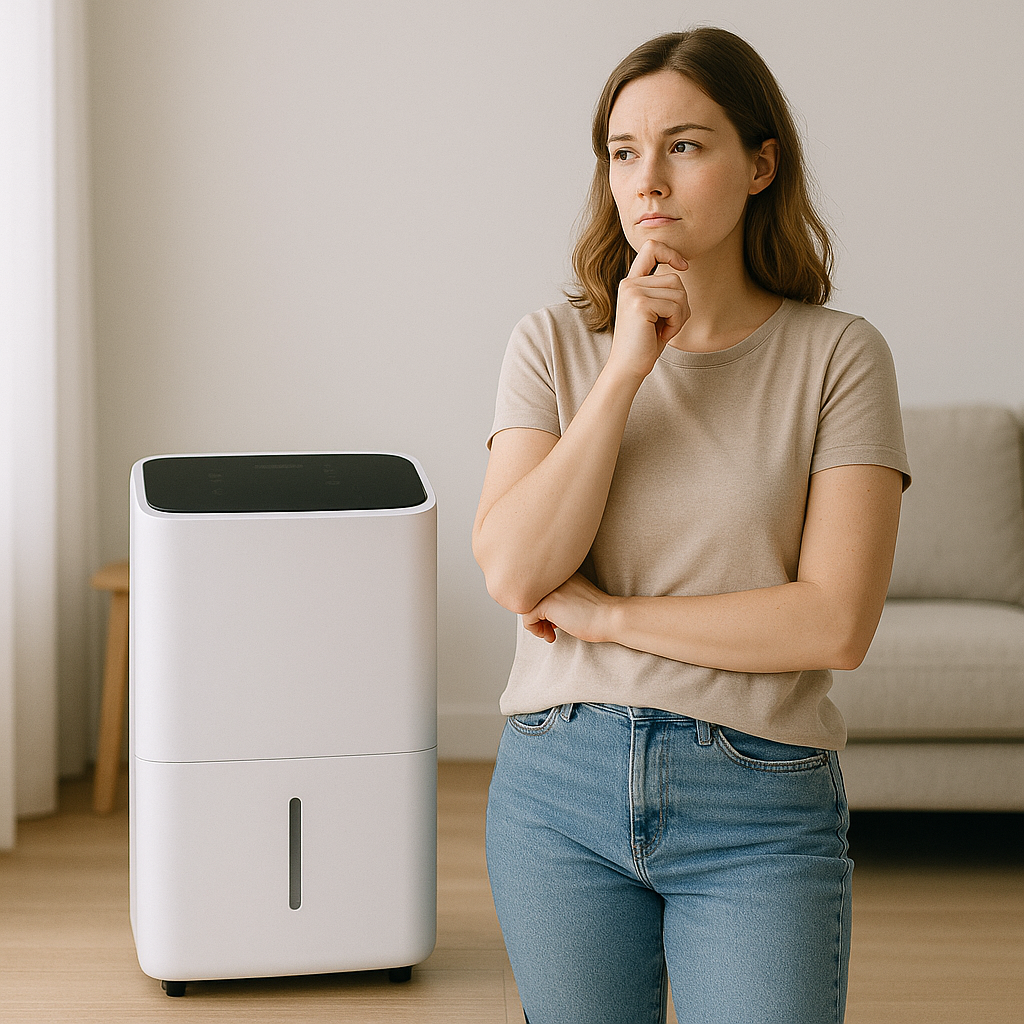
What Do Dehumidifiers Do?
The simplest way to describe what dehumidifiers do is that they pull moisture from the air. Most are composed of five basic parts.
- Fan
- Compressor
- Cooling coils
- Reservoir
- Reheater
Air gets pulled into the dehumidifier and cooled and compressed to remove moisture. The moisture goes into the reservoir, and then the air is reheated and released back into the room.
How to Know Which Dehumidifier to Choose
Here are some questions to ask yourself before you go shopping for a dehumidifier.
- How much humidity is in my home? (More on that in the next section.)
- How large is my home?
- Will I need to run the dehumidifier all the time?
- How much do I want to spend?
These questions will help you narrow your choice of dehumidifiers.
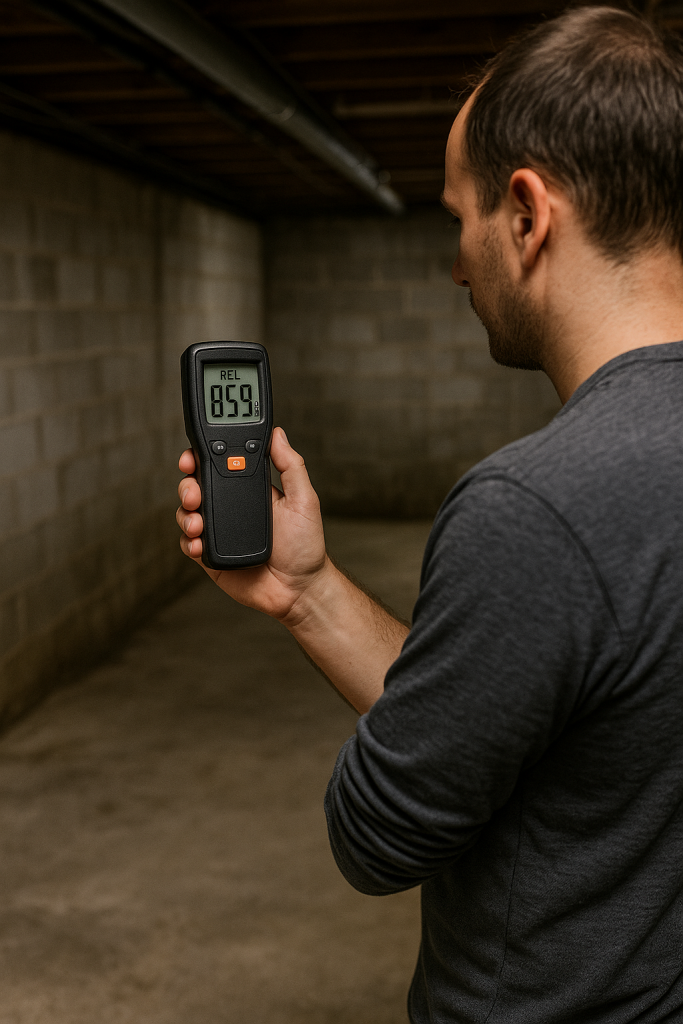
How to Measure Indoor Humidity Levels
One of the most important questions to ask is how humid your home is to begin with. It’s easy to figure out.
You can head to your hardware store and purchase a hygrometer to give you the percentage of humidity. If you have two thermometers on hand, here are the steps to measure humidity levels in your house without a hygrometer.
Step 1: Take two standard glass thermometers. Leave one as it is, and wrap the base of the other with a wet cloth.
Step 2: Place both thermometers in front of a fan. Leave them there for five minutes.
Step 3: At the end of five minutes, check the temperatures and subtract the dry bulb temperature from the wet bulb temperature. Use the table on this page to identify your humidity level.
Watch the video below to see the dry and wet bulb thermometer method.
Types of Dehumidifiers
There are several types of dehumidifiers to consider.
- Heat pump dehumidifiers
- Dehumidifying ventilators
- Chemical absorbent dehumidifiers (also known as desiccant dehumidifiers)
Heat pump | Dehumidifying vent | Desiccant | |
Mechanism | fan/heat pump/coils | sensor/exhaust fan | Silica gel packets or cartridges |
Ideal use | Warm/hot climates | Basements and crawl spaces | Homes without children or animals |
Cost | Varies based on size | Varies based on size | Varies based on size |
Steps to Choose a Dehumidifier
Here are the steps to follow when you go shopping for a basement dehumidifier.
Step 1: Measure the humidity in your basement and its square footage.
Step 2: Set a budget for how much you can afford to spend.
Step 3: Read online reviews to see what other people say about any dehumidifier you’re considering.
Step 4: Review statistics about energy efficiency, especially if you think you’ll be running your basement dehumidifier all the time.
Step 5: Buy and set up your new dehumidifier!
Keep reading to see our picks for the top rated dehumidifiers for basements.
Top Rated Dehumidifiers for Basements
Here’s our list of the top rated and best dehumidifiers for basements.
Germaphobix 140 Pint Portable Commercial Dehumidifier w/ Water Tank and Drainage Pipe
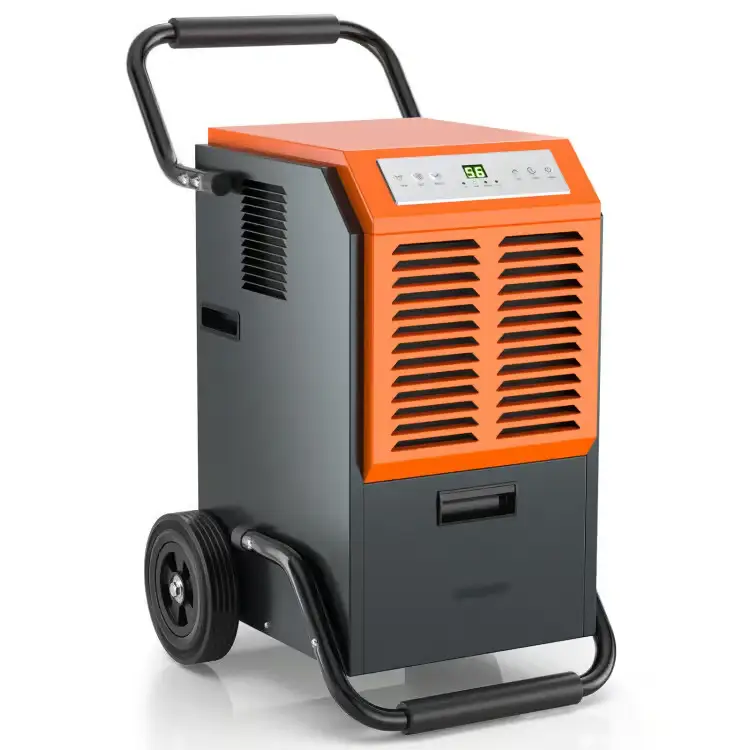
If you’ve got a large basement or need to dehumidify an industrial space, the Germaphobix 140 Pint Portable Commercial Dehumidifier w/ Water Tank and Drainage Pipe is a good choice.
This model can remove up to 140 pints of water from basements up to 2,000 square feet. It comes with overflow protection, which is perfect if you’ll need to leave it running all day.
Reviewers praise its efficiency, durability, and Germaphobix’ excellent customer service.
Midea 22 Pint Dehumidifier 1,500 Sq. Ft. Energy Star Certified
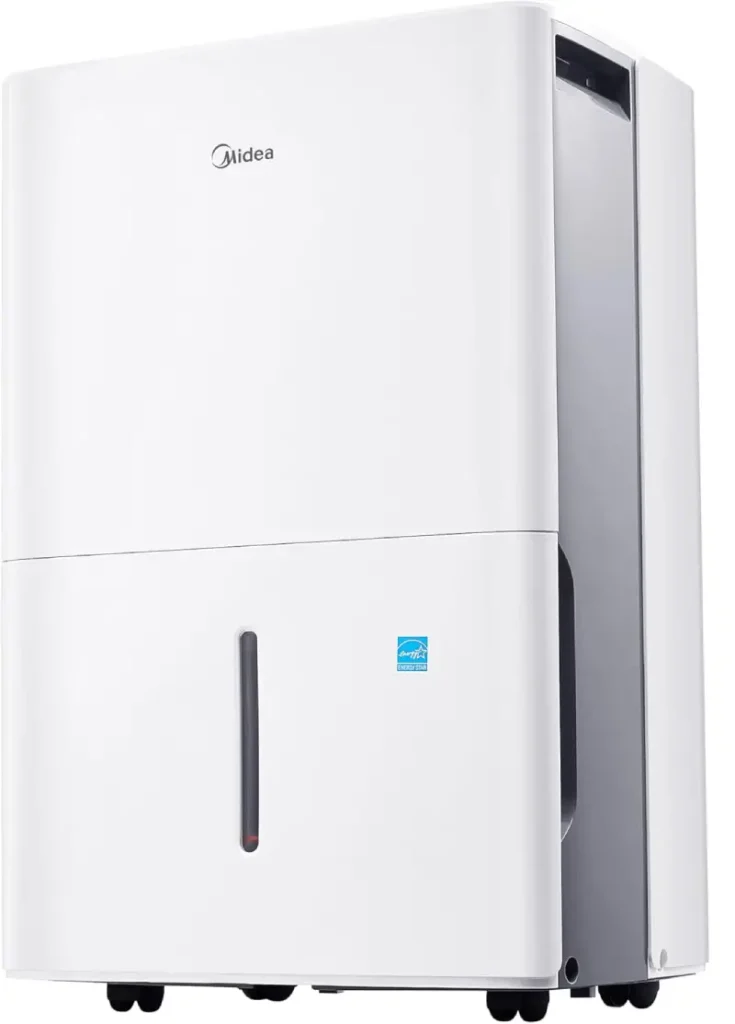
Our next choice is a highly rated option that is both energy efficient and effective: the Midea Cube 1,500 Sq Ft Energy Star Certified Dehumidifier.
This dehumidifier has been tested by multiple consumer organizations and was ranked #1 by the Dehumidifier Buyer’s Guide. It was faster than any other model at reducing humidity from 90% to 40%.
Reviewers have praised its quietness and energy efficiency, as well as its durability. One downside is that the tank holds only 22 pints of water and may need to be emptied several times a day.
Frigidaire 35 Pint Dehumidifier FFAD5033W1
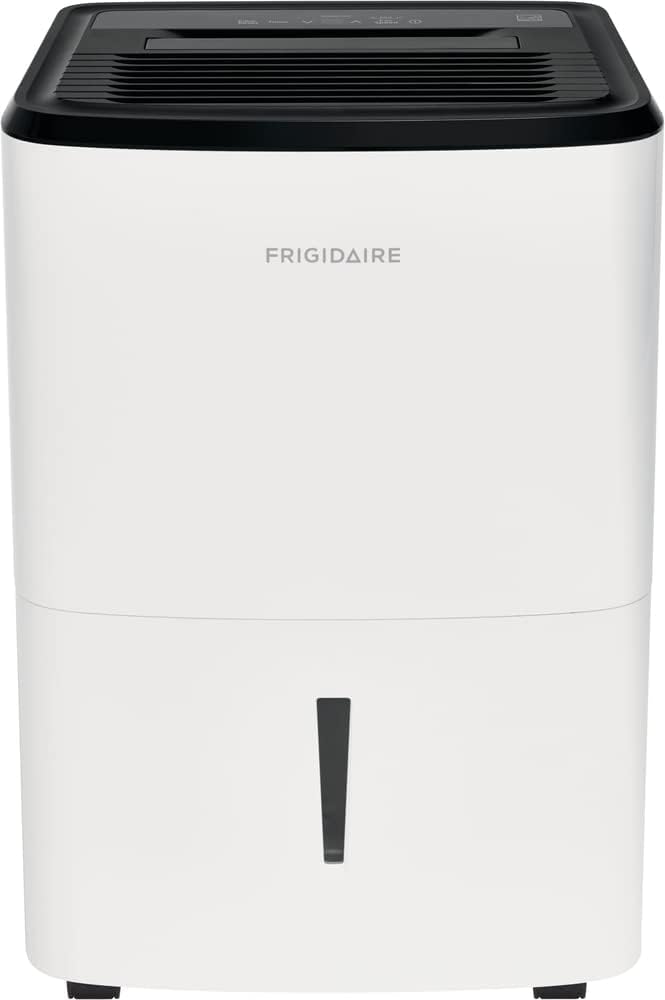
The next highly-rated dehumidifier to consider is the Frigidaire FFAD5033W1, which also rates highly for its effectiveness and speed at lowering humidity.
It’s a solid choice with a 35-pint tank and customizable humidity options, so you can keep your basement’s humidity at a level you find comfortable.
Reviewers speak highly of this model’s ability to lower humidity quickly and say that it’s helped them suffer less with respiratory conditions. The one complaint is that the fan is on the noisy side.
GoveeLife 50 Pint Dehumidifier for Home
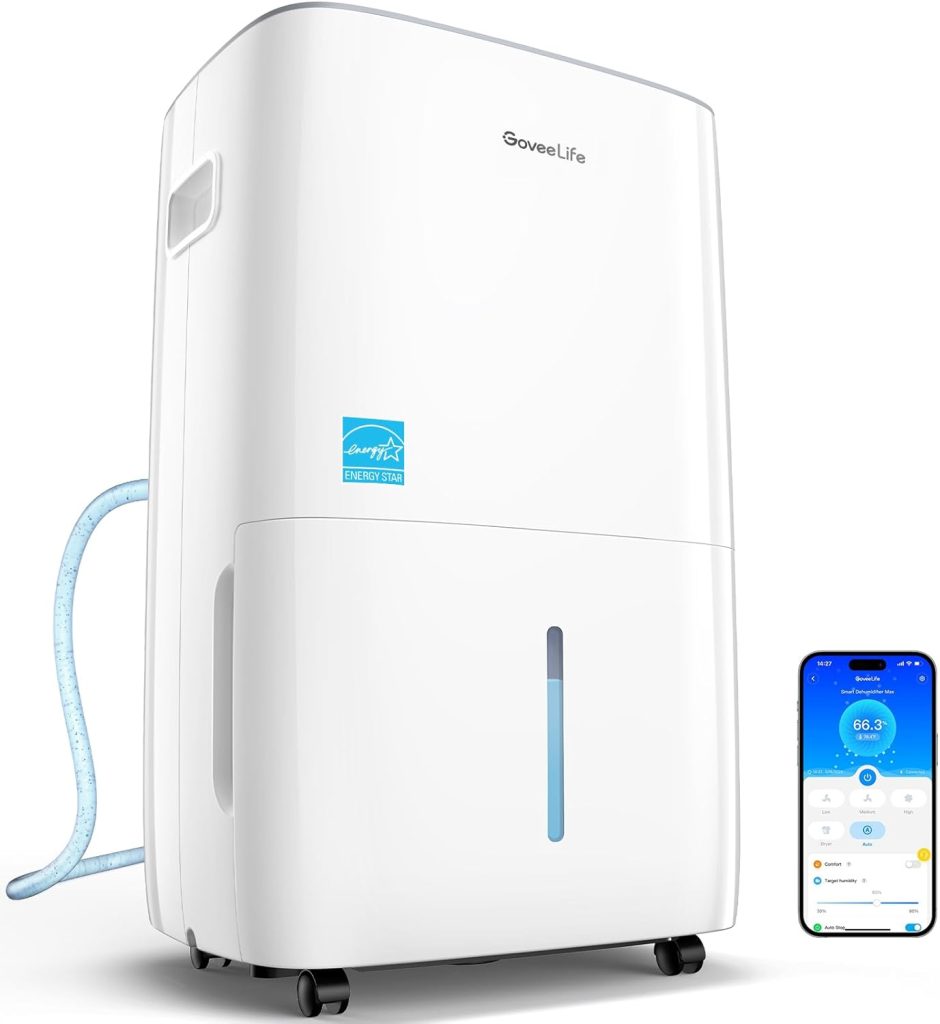
The GoveeLife Dehumidifier for Home is one of the more affordable models out there, especially when you consider its 50-pint capacity.
It has performed well in dehumidifying tests and is one of the lighter options, weighing in at just 39 pounds.
Some reviewers rave about the useful mobile app, which allows them to adjust humidity levels by 1% at a time. They also praise the fact that this (relatively) small unit can dehumidify up to 4,500 square feet.
Etitato Dehumidifier, 2.5 Pints 128 OZ Visible Water Tank Dehumidifiers for Home
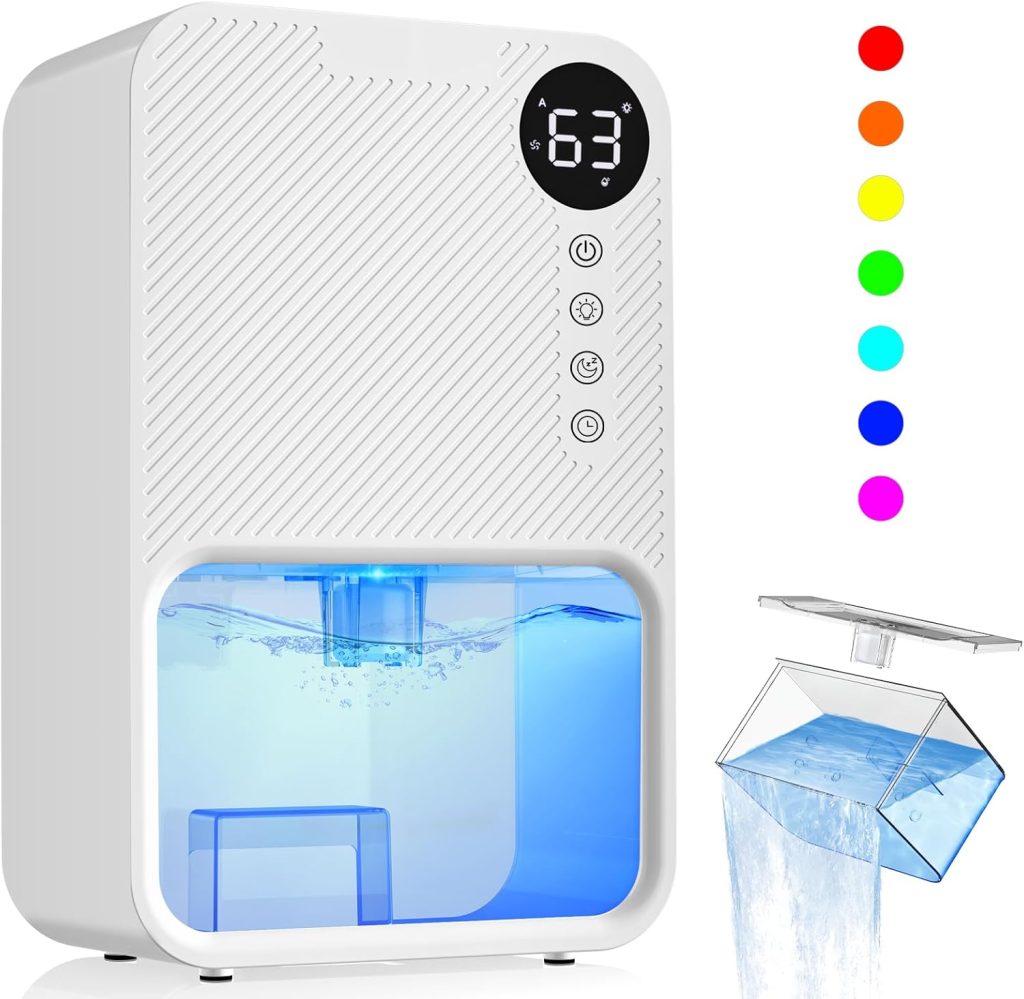
Our final choice is this top-rated, small dehumidifier from Etitato. It’s got a perfect, 5-star rating on Amazon.
This model can dehumidify spaces up to 1,000 square feet, which is more than enough for many homeowners. It has an automatic shut-off function.
The 5-star reviews mention this product’s compact size, quiet operation, and efficiency. It’s not ideal for large spaces, but may be exactly what you need for a smaller home or apartment.
What About Energy Efficiency?
How can you learn about a dehumidifier’s energy efficiency? Here are a few steps to help you figure out what your energy usage might be if you buy a dehumidifier.
Step 1: Narrow your search by looking for Energy Star certified options. Energy Star certification comes from the Environmental Protection Agency and is independently verified.
Step 2: Read reviews from people who have used the product. Amazon reviewers often provide details about energy usage and their experiences can help you choose the right dehumidifier for your needs.
Step 3: Choose the right product. If you think you’ll be running your dehumidifier around the clock, you’ll want to choose a model that’s highly efficient.
What Size Dehumidifier to Get
Check out this chart to figure out what size dehumidifier you should get. Keep in mind that the size of the water tank is essential. If you get a tank that’s too small, you’ll be worried about leaks.
Tank Size | Square Footage | Humidity Level |
20-30 pints | 400 | 60% to 90% (choose 20 pints at the low end, 30 pints at the high end) |
25-40 pints | 600 | 35 pints for 70% or higher humidity |
35-50 pints | 800 | 45 points for 70% or higher humidity |
50-60 pints | 1,000 – 1,200 | 50 pints should be fine up to 70% humidity |
Make sure that you first measure your humidity to make the right choice for your space.
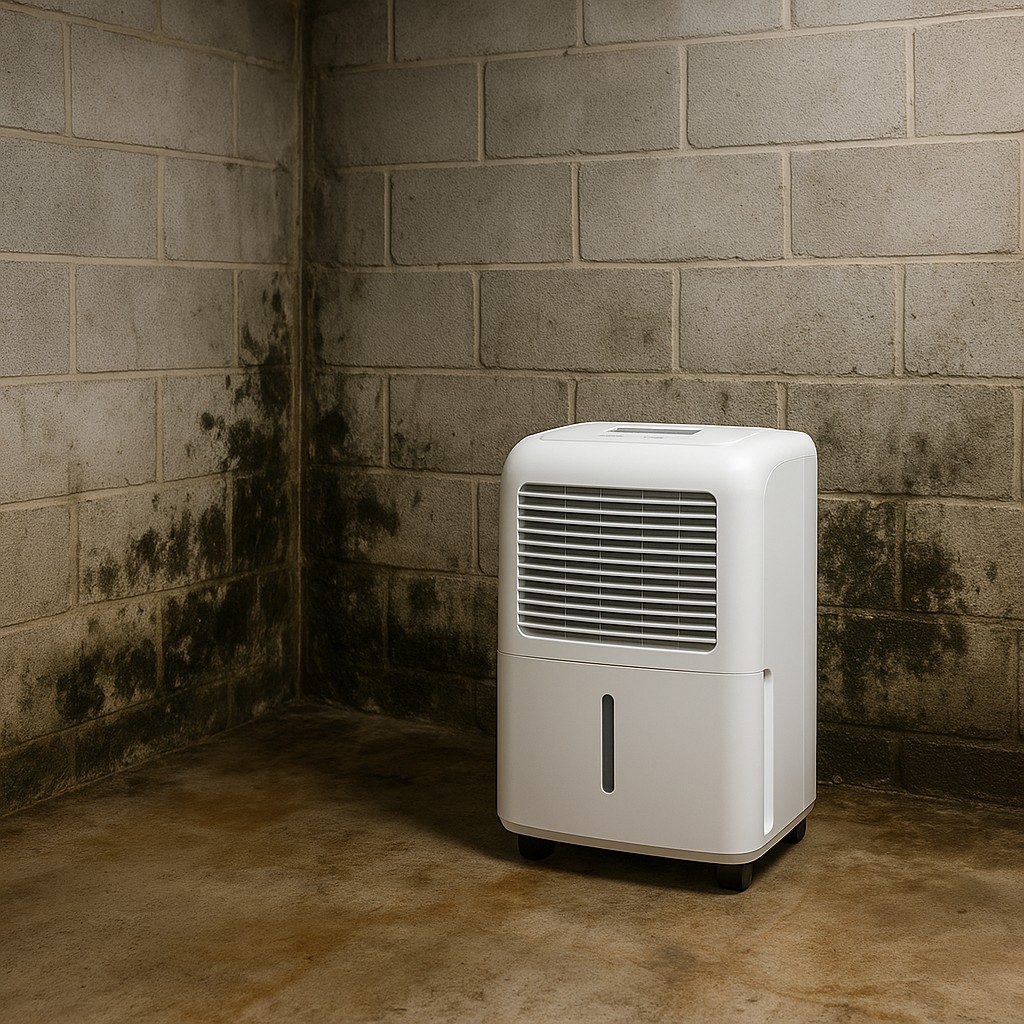
FAQs
Do dehumidifiers prevent mold?
This is a great question, and the answer is yes, but only to a point. Experts have pointed out that it’s impossible to remove all mold and mold spores from an interior space.1 However, they’ve also said that mold thrives in damp environments, so installing a dehumidifier can make your home a less welcoming place for mold.
Should I go with a commercial/industrial grade dehumidifier?
The truth is that most homes won’t require a commercial or industrial grade dehumidifier, but some may. Consumer Reports has said that smaller dehumidifiers won’t get the job done in spaces that are 1,200 square feet or larger.2 If you’ve got a large home or live someplace where the humidity is extremely high, then you may benefit from investing in a commercial dehumidifier.
What’s the ideal humidity for inside a house?
The answer to this question may depend partially on personal preferences and partially on environmental and health concerns. If your comfort is the most important thing, then the real answer is that you should keep the humidity at a level where you’re not uncomfortable. The EPA says that for indoor spaces, the ideal humidity level is between 30% and 50%.3
Are there any side effects from running a dehumidifier all day?
While dehumidifying your living space can help with mold and allergens, there are some potential side effects, too. According to Healthline, since dehumidifiers remove moisture from the air, they may dry out your skin, hair, and nasal passages.4 Drinking enough water can offset the effects.
Conclusion
Finding the best dehumidifiers for basements is essential, particularly if you or someone in your household suffers from allergies, asthma, or other respiratory conditions. The options we’ve included here have been tested and positively reviewed. If you’re looking for a way to decrease humidity in your home, we hope you’ve found your answer here!
Citations
1 “Do Dehumidifiers Help with Mold?” Livescience.Com, 12 Feb. 2024, www.livescience.com/do-dehumidifiers-help-with-mold. Accessed 15 May 2025.
2 “What Size Dehumidifier Do You Need?” Consumerreports.Com, 12 Feb. 2024, www.consumerreports.org/appliances/dehumidifiers/what-size-dehumidifier-do-i-need-a8767558534/. Accessed 15 May 2025.
3 “Care for Your Air: A Guide to Indoor Air Quality.” Epa.Gov, 31 Mar. 2025, www.epa.gov/indoor-air-quality-iaq/care-your-air-guide-indoor-air-quality. Accessed 15 May 2025.
4 “What Does a Dehumidifier Do?” Healthline.Com, 20 Jun. 2020, www.healthline.com/health/dehumidifier-benefits#how-it-works. Accessed 15 May 2025.